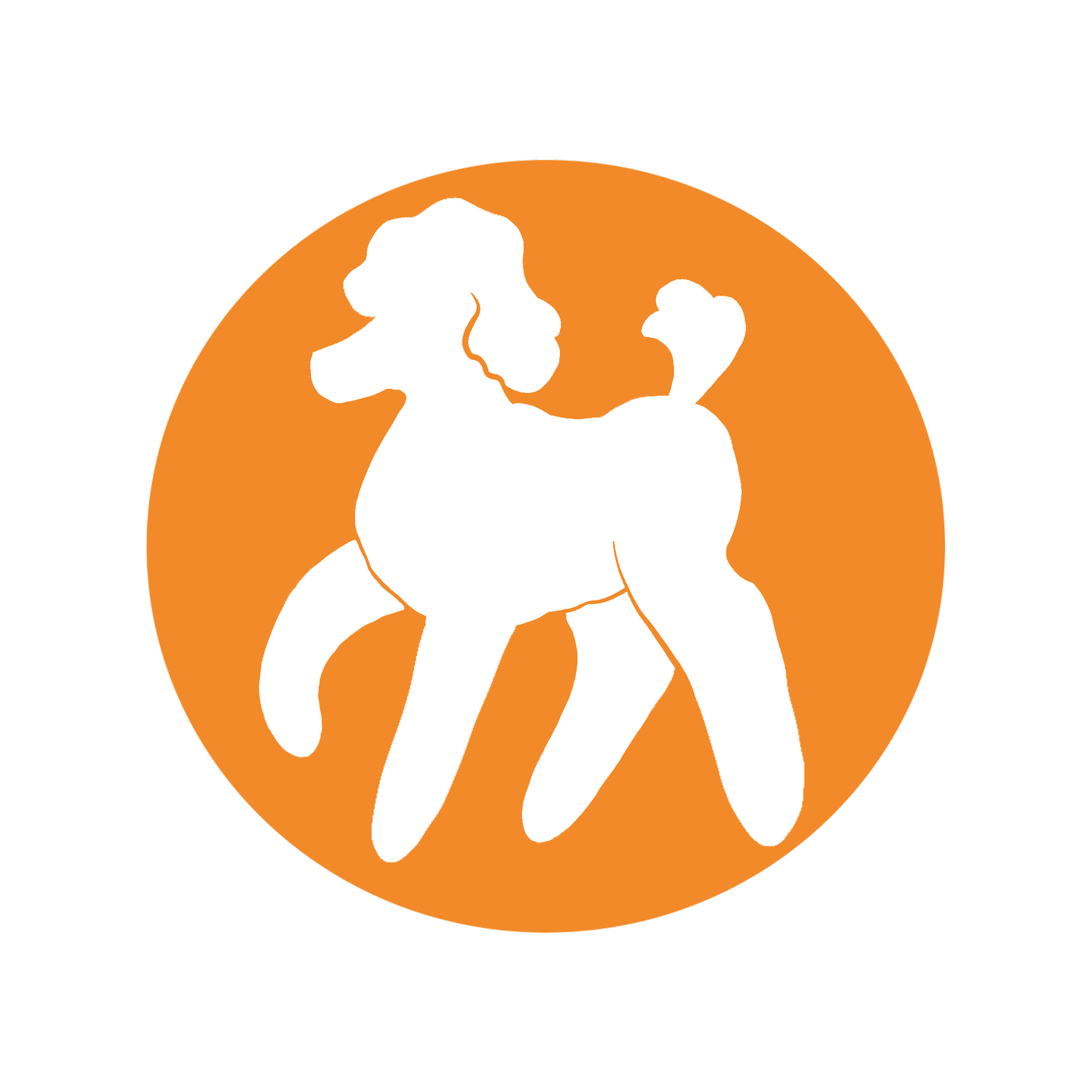Ways of Pressing Buttons
Let’s discuss different ways learners can interact with buttons.
Before we start
Never cue your learner to push a button, or demand they press any/a specific button, or press a button a specific way. This is learner-led communication, and interaction with the buttons should always be on your learner’s terms.
How learners press
The main two ways learners press are using their paws or their nose. You will probably have an idea about how your learner will press, but don’t let those expectations influence your board layout or judgment about what behaviour to encourage. Wait until you get your first presses and see what their preference is.
Encourage any attempts to use the buttons with paws, nose, or both. If your learner has a cued behaviour like the “touch” or “paw” command, you will already know they can be precise with their paw or nose, but that doesn’t mean they’ll use that method with buttons.
You might see your learner change their pressing style over time. They might do one, then the other, or combine both, and that’s absolutely fine. Evolve your board with any changes in your learner’s pressing style to make sure they can still access their board the way they want.
Other ways of pressing
Learners press deliberately in all sorts of ways, using front paws, back paws, noses and even bottoms or toys on occasion. Some teachers see regular deliberate presses with back paws and other body parts, whereas some feel their learner’s only deliberate presses are through their nose or front paws. None of these methods should be discouraged, and the best way to encourage accuracy when your learner begins to press in a way they didn’t before is to respond to all presses as if they are deliberate.
If you ignore all back foot presses for example, what you are teaching your learner is that it doesn’t matter what they do with their back paws, you will not listen to them. Responding to them gives your learner an incentive to be aware of what their back paws are doing and to avoid accidental presses. At best, if you ignore presses made in a particular way your learner will be careless so you’ll get a mix of deliberate and non-deliberate words in presses which you will then have to decipher - at worst you will be ignoring a way they are choosing to communicate and create frustration.
Bunny uses her back feet a lot.
Here you can see her right front paw and left back foot deliberately on buttons, as she waits for a response.
She’s pressing “Love You” with her front foot on the red tile and “Lizzy” with the back foot on the orange.
Using toys on the board
Some learners will take their toys onto the board and use them to activate buttons - you will need to use some judgment here. If your learner has a ball in their mouth and presses “play ball” that would seem to be a convincing interaction and you should respond. If you are unsure, as always, go back to the golden rule of showing your learner the buttons are meaningful by responding to their presses as if they are deliberate.
If you’re sure your learner isn’t trying to communicate with their buttons, responding to their presses is still a good idea, as it reminds them presses have consequences and should encourage them to be more careful. However, if your learner is clearly using their soundboard as a fun way to bounce more treats out of their treat-ball and is entirely uninterested in what you have to say, then you can safely ignore those presses and turn the TV up!
Do learners look at buttons?
We usually see learners looking at their buttons a lot before pressing, and even studying them. This is very common in the early stages, when they are learning how buttons work, or after changes to their soundboard. However, you don’t need to ask your learner to look at a button (or the soundboard). Please don’t direct their gaze to the buttons by the use of any objects or pointers as this is almost always going to lead to directing their use.
While some learners will often study and look at buttons before pressing, it is definitely not the case that all experienced learners look down at their boards as they press. Just like some people are really good at touch-typing and don’t have to look at the keyboard to type very quickly, some learners seem to be able to move very quickly across their board with a great level of accuracy. Others don’t, or choose not to! Some teachers use tape and tile colours to mark out areas of the board, and will customise the stickers that label their buttons to help their learners locate their buttons. While there are no research conclusions yet on how learners find buttons and navigate their boards, we recommend trying those methods if you think your learner might benefit from them, introducing them slowly.
Laying on buttons
It’s not unusual to see cats in particular lay on their buttons.
As always, if in doubt, treat the button press as if it’s deliberate if you can make it out. If you have a learner who is laying on buttons and running down the batteries, it can be helpful to give them an empty section of tile to lay on instead. We know lots of cat learners who have blank tiles to snooze on. It’s good that your learner is attached to the soundboard though!
Takeaway points
However your learner presses, respond as if that press is intentional.
If your learner prefers pressing with their nose, don’t try to stop them.
Don’t try to get your learner to look at their buttons, or worry if they don’t seem to look at them much.

